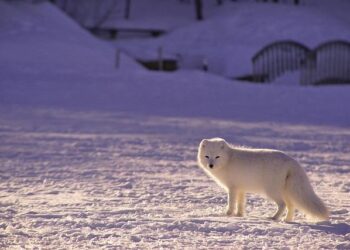Nestled in the icy expanse of the Arctic Ocean, Jan Mayen stands as one of Norway’s most remote and enigmatic territories. This isolated volcanic island, known for its rugged landscapes and relentless weather, plays a unique role in Norway’s Arctic presence. Despite its harsh environment and minimal human footprint, Jan Mayen continues to captivate scientists, meteorologists, and adventurous explorers alike. In this article, we delve into the island’s geographic significance, volcanic activity, and the distinctive life that persists at the edge of the Arctic wilderness.
Jan Mayen’s Volcanic Landscape Uncovered Exploring the Arctic’s Fiery Frontier
Jan Mayen stands as a stark testament to the raw power of nature, featuring one of the most active volcanic landscapes in the Arctic. Dominated by the imposing Beerenberg volcano, this Norwegian island offers a unique geological panorama shaped by continuous eruptions and shifting lava fields. The island’s surface is a blend of jagged volcanic rock, deep fissures, and glacial elements, creating an otherworldly environment where fire and ice collide. Scientists flock here to study the island’s dynamic volcanic activity, which plays a critical role in understanding Arctic tectonics and climate interactions.
The remote location of Jan Mayen means that exploration and monitoring are limited to specialized expeditions. Amid the harsh Arctic conditions, only a select few researchers and meteorological staff inhabit the island seasonally. Key features of this volcanic frontier include:
- Beerenberg Volcano: The northernmost active stratovolcano globally.
- Lava Fields: Expansive fields evidencing recent eruptions.
- Glacial Overlays: Ice sheets that intermittently cover volcanic terrain.
- Seismic Monitoring Stations: Vital for tracking volcanic activity and hazard assessments.
| Feature | Characteristic | Status |
|---|---|---|
| Beerenberg Volcano | 2277 meters high stratovolcano | Active |
| Recent Eruptions | Recorded in 1970, 1985 | Confirmed |
| Glacial Coverage | 16 km² ice cap | Seasonal extent |
| Research Stations | Meteorological and seismic | Operational |
Unique Wildlife and Harsh Climate Life on Norway’s Isolated Arctic Island
Nestled in the unforgiving Arctic, Jan Mayen Island presents an extraordinary case of survival against the odds. Its isolated terrain is home to a variety of unique wildlife species, adapted to endure the relentless cold and frequent volcanic activity. Birdlife dominates the ecosystem, with large colonies of seabirds such as the Atlantic puffin, BrĂĽnnich’s guillemot, and black-legged kittiwake nesting along its cliffs. The surrounding icy waters host marine mammals, including the elusive narwhal and occasional sightings of polar bears wandering from the ice floes, highlighting the island’s critical role as an Arctic refuge despite its harshness.
The island’s extreme climate shapes every aspect of this fragile ecosystem. With temperatures rarely climbing above freezing and fierce polar winds sweeping across the barren volcanic landscape, life here demands remarkable endurance. Vegetation is sparse but specialized, comprising mainly hardy mosses, lichens, and Arctic willows. Below is a snapshot of key factors defining life on Jan Mayen, reflecting its struggle and resilience under extreme conditions:
| Aspect | Details |
|---|---|
| Average Temperature | -8°C to 3°C |
| Dominant Wildlife | Seabirds, Arctic foxes, Marine mammals |
| Vegetation | Mosses, Lichens, Arctic Willow |
| Volcanic Activity | Moderately active (Beerenberg Volcano) |
| Isolation Impact | Limited human presence, minimal ecological disturbance |
Essential Tips for Visiting Jan Mayen How to Prepare for an Arctic Adventure
Exploring Jan Mayen demands meticulous planning due to its extreme Arctic environment and limited infrastructure. Travelers should prioritize suitable cold-weather gear, including insulated layers, waterproof outerwear, and sturdy boots designed for icy terrain. Since the island has no permanent civilian population, all essentials must be brought along-food supplies, medical kits, and communication devices are vital for safety. Additionally, coordinating travel through authorized expeditions is crucial; independent visits are generally prohibited due to environmental protection laws and safety concerns posed by the active Beerenberg volcano.
Understanding local weather patterns can mean the difference between a successful visit and a forced retreat. Jan Mayen experiences sudden storms and drastic temperature shifts, so monitoring forecasts and preparing for rapid weather changes are critical. Visitors should also familiarize themselves with the island’s strict environmental guidelines to minimize human impact, such as proper waste management and respecting wildlife habitats. Below is a brief overview of essential equipment and considerations for those embarking on this Arctic adventure:
| Preparation Aspect | Key Recommendations |
|---|---|
| Clothing | Thermal base layers, windproof jackets, insulated gloves |
| Travel Permissions | Authorized expedition booking, permits from Norwegian authorities |
| Supplies | Non-perishable food, medical supplies, satellite phone |
| Environmental Precautions | Strict waste disposal, wildlife observation at distance |
| Safety | Volcano activity awareness, emergency evacuation plans |
The Way Forward
Jan Mayen stands as a stark reminder of nature’s raw power and the enduring spirit of human exploration. This remote volcanic outpost, nestled in the icy expanse of the Arctic Ocean, continues to captivate scientists and adventurers alike with its unique environment and strategic significance. As Norway maintains its presence on the island, Jan Mayen remains a critical hub for meteorological research and Arctic surveillance, underscoring its importance far beyond its isolated location. In an era of increasing interest in the Arctic’s future, Jan Mayen exemplifies the challenges and opportunities of life at the edge of the world.
















